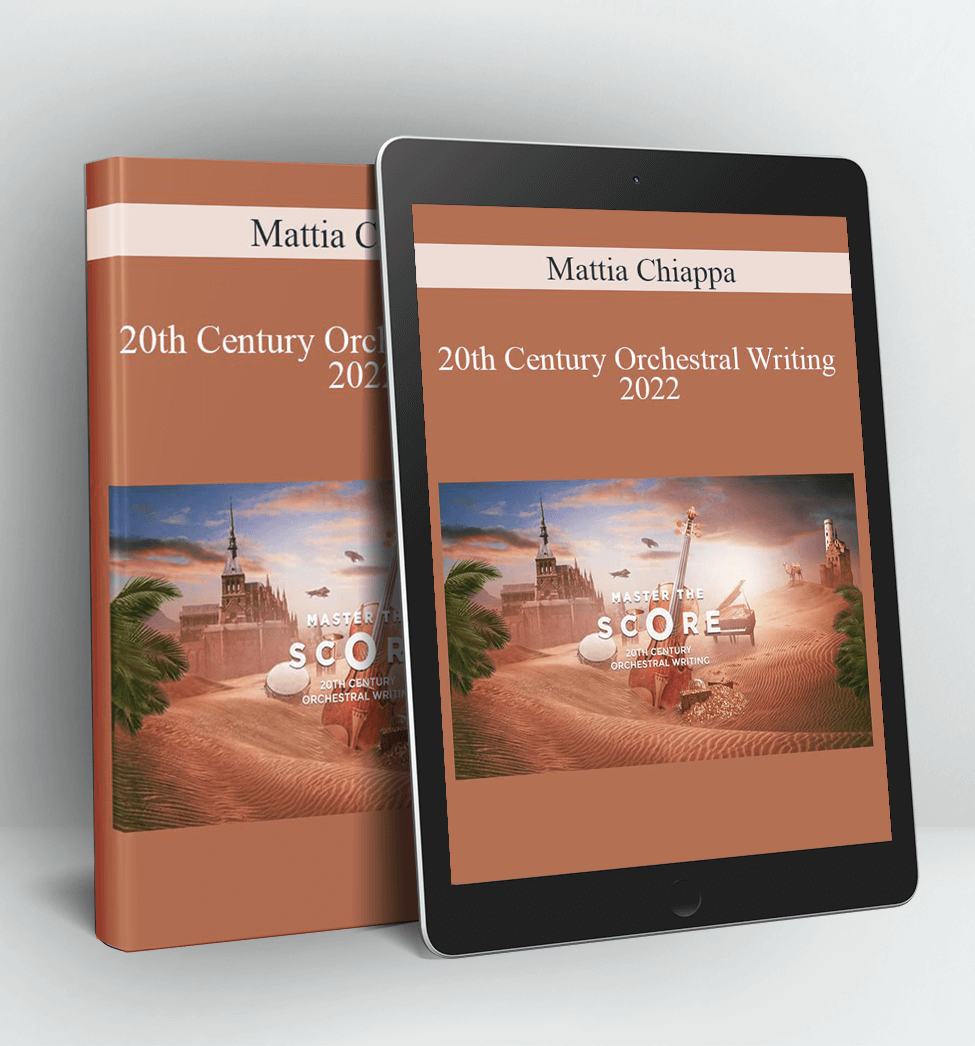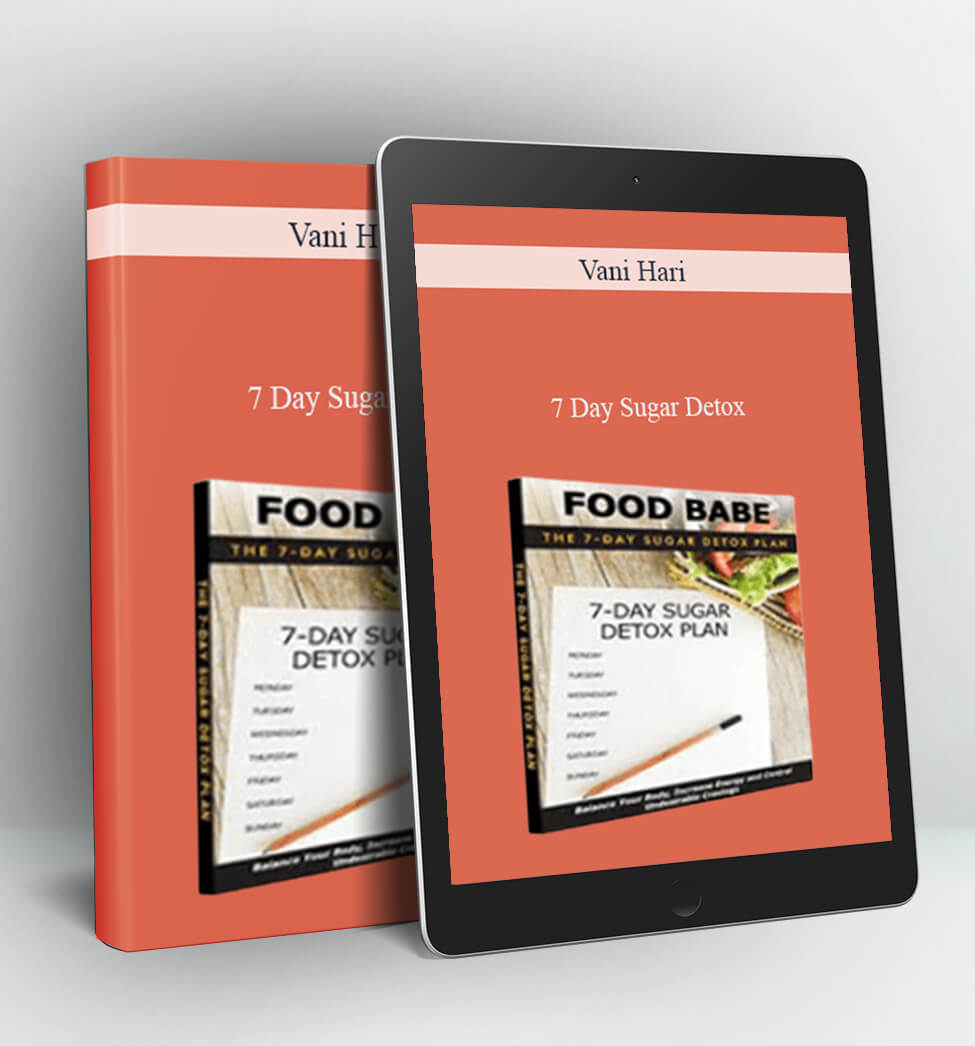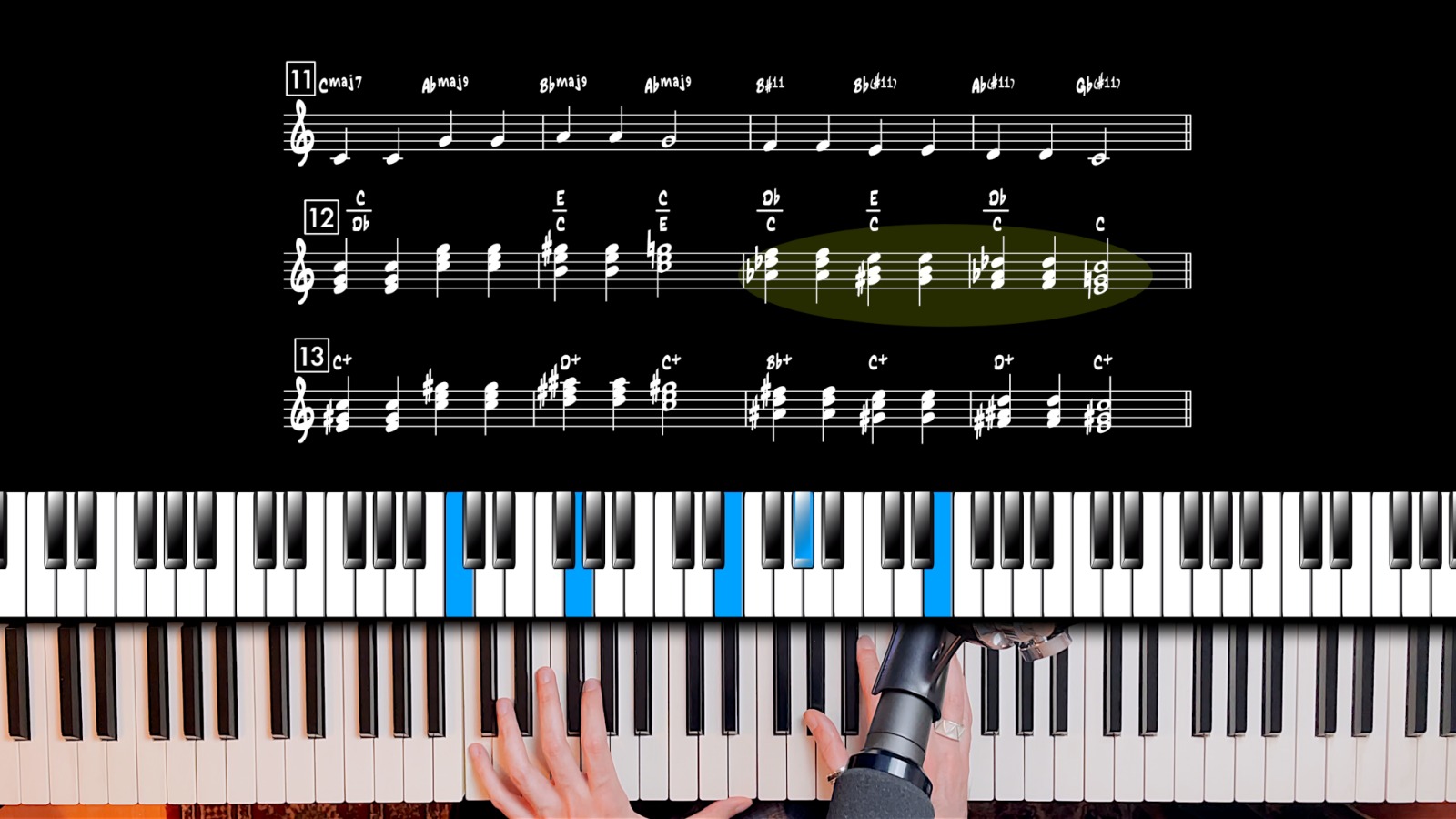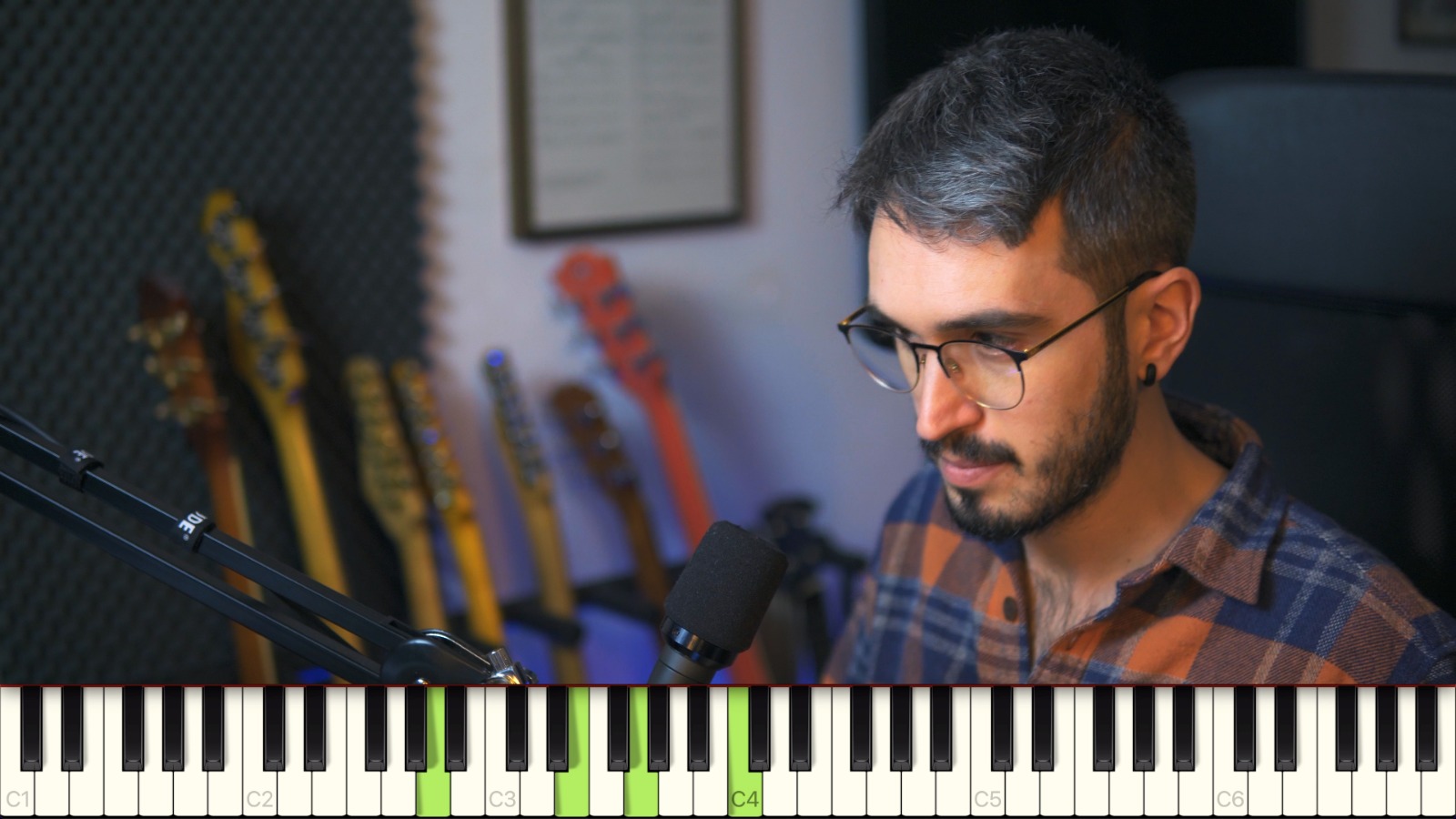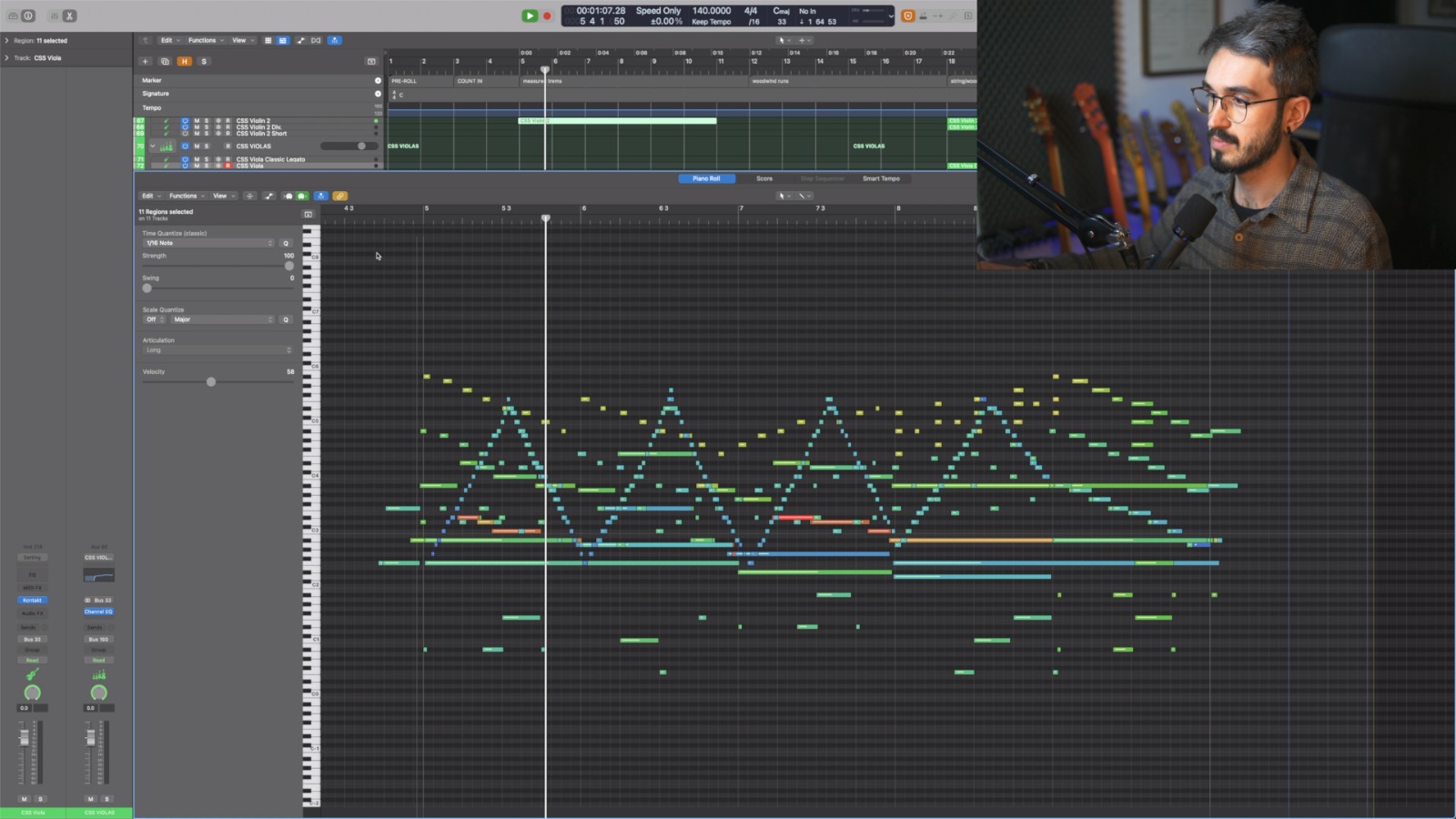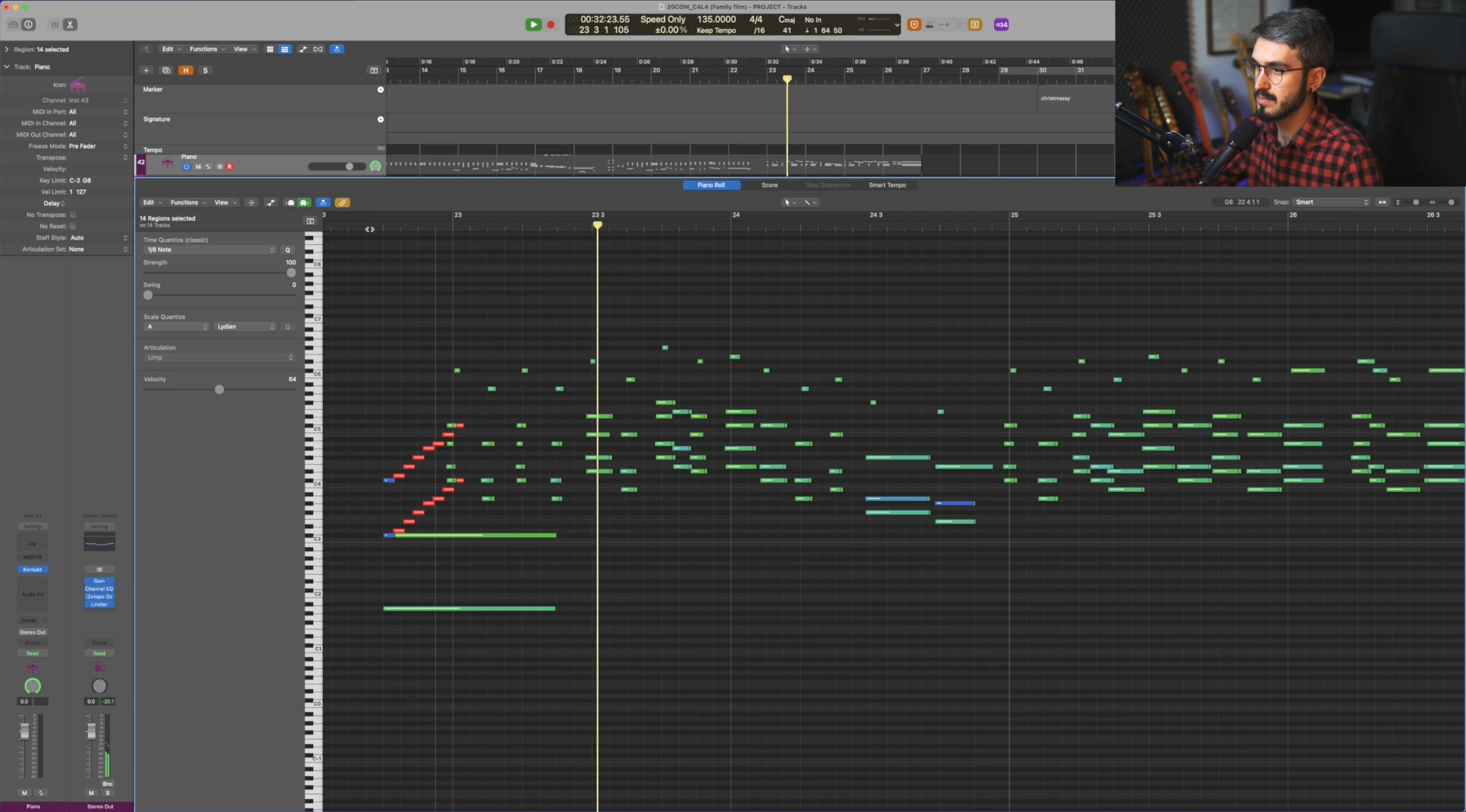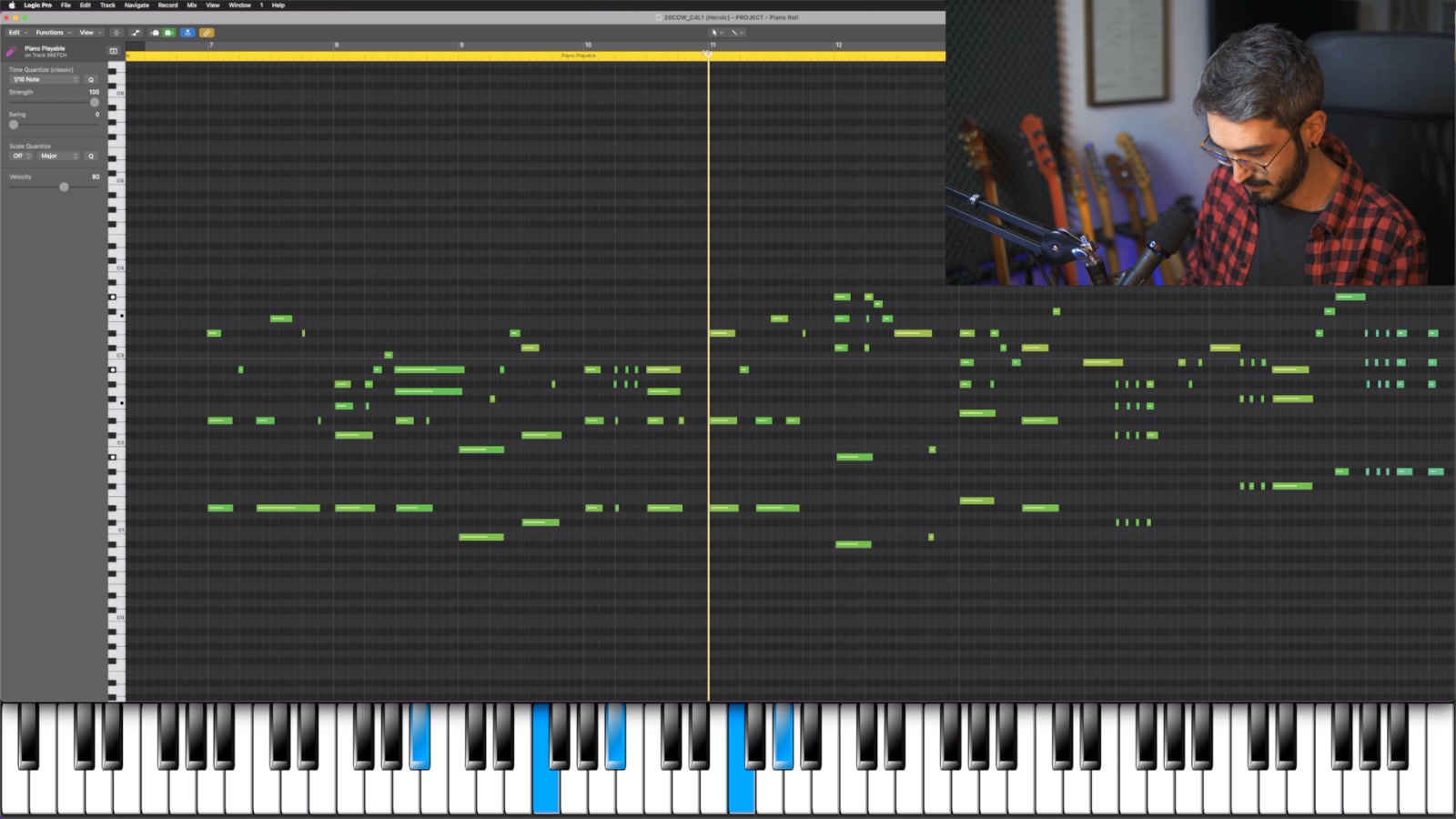20th Century Orchestral Writing 2022 – Mattia Chiappa
Can you remember watching your favourite movies back in the day, thinking about how wonderful and complex the music was? Writing Orchestral Music in the style of the great masters like John Williams indeed can be intimidating at first. Complex arrangements, that develop throughout the piece, constantly changing orchestral textures and harmonic choices that keep the listener fascinated throughout a whole movie, are just a few of the challenges we have to take. Believe it or not, the process can be easier than you think, once you understand the basic principles behind it. To tackle one of our most awaited courses, Master The Score teamed up with orchestral virtuoso Mattia Chiappa who teaches “20th Century Orchestral Writing”.
Mattia Chiappa
Mattia Chiappa is a composer, orchestrator, musician based in London, UK.
His expertise lies in the production of dense symphonic arrangements and rich orchestral scores that embody the spirit of classic film scores.
Alongside being a composer, he is also a working musician, having performed as guitarist and bassist on many stages across the UK.
Originally from Italy, Mattia moved to London in 2013 after winning a national competition with price a scholarship for the guitar performance course at University of West London.
His lifelong interest for orchestral composition would lead him to transitioning into production music and seeing his work licensed for Netflix shows, BBC and Discovery documentaries among many other types of media.
Learn to write in the style of classic film composers:
- Elevate your pieces to the next level by learning advanced compositional techniques
- Keep listeners fascinated by using modulations, build ups and advanced harmony
- Learn to orchestrate with constant changing orchestral textures and colours
Your way to advanced orchestral arrangements:
1 Variations on a theme
In this wonderful first section of the course, Mattia teaches you how to transform a simple theme into a longer piece using interesting variations.
Mattia chose “Twinkle Twinkle Little Star” to lead his students through a fascinating journey of harmonic development. Every new technique will be demonstrated using this very same piece, to showcase the different sounds and impacts.
In this section you will slowly be introduced to various development techniques like diatonic variations, variations using modes, non-diatonic variations, modulations and more.
By the end of this section you will be able to expand your musical ideas and themes, into longer, more complex compositions that keep the listeners fascinated. This section will lay the necessary fundamentals to advanced orchestral music in the style of classic hollywood composers.
He covers topics like:
- diatonic variations
- variations using modes
- non-diatonic variations
- different kinds of modulations
- basic structuring
2 Sketching and orchestrating a simple theme
In the second section of the course, Mattia starts by explaining how to come up with a proper piano sketch that translates well to the orchestra. You will learn what to look out for when sketching your piece, so that you will not encounter any problems during the orchestration part that follows. Besides teaching you the concepts of sketching, Mattia presents his own piano sketch he came up with for this section.
Mattia then sets up a few guidelines his students can follow and begins orchestrating his piano sketch from beginning to end while explaining his thought process and mindset.
While following Mattia you will learn how to create fascinating orchestrations that keep your listeners speachless by constantly changing orchestral textures and instrumentations.
You will learn to:
- sketch out your pieces
- create sketches that translate well to the orchestra
- avoid mistakes when orchestrating a sketch
- create interest by changing orchestral textures
- create orchestral transitions and much more
3 Orchestration Techniques
In this section Mattia dives even deeper into the topic of orchestration by exploring common techniques every composer should know.
He starts with a couple of wonderful lessons about doubling in unison and doubling in octaves. Every example is presented with short musical examples to help his students understand the different sound qualities.
He then showcases different kinds of textures such as rythmical, chordal and scaler textures and how each of them can affect the sound of our music. By using the same chords and melody for each example, Mattia perfectly illustrates the effect these different kinds of textures have on our pieces.
To finish off this section Mattia talks about counterpoint and how we can incorporate it in our music to create stunning and complex compositions.
You will learn about:
- doubling in unison
- doubling in octaves
- chordal textures
- rythmic textures
- scalar textures
- runs
- counterpoint
4 Essential Styles
In this magical fourth section of the course, Mattia presents us some blueprints for different styles of music, that we all love and remember from our favourite movies.
He presents 4 differents tracks in differents styles: heroic, romantic, mystery and family adventure.
For all the tracks he provides full walkthroughs of harmony and orchestration. By following these walkthroughs students will have a great understanding of how they can achieve a certain sound.
Mattia even provides the complete midi files for all the tracks and encourages his students to study them in even more detail.
In this section, already much of what we have learned so far will be put into practice. This section will for sure leave you fascinated and full of energy to jump right into action yourself.
You will learn:
- harmonic concepts
- orchestration concepts
- heroic
- mystery
- romantic
- family adventure style
5 Writing a complex cue
In this final chapter of the course Mattia dives deep into a complex cue that simply leaves the listener speachless.
You will witness complex harmonic arrangements together with constantly changing orchestration.
Mattia starts out by giving you general advice on how to sketch a complex cue. He then jumps right into action by giving you a full harmonic walkthrough of his track – a true treasure trove of harmonic concepts.
In the next couple of videos Mattia breaks down the orchestration of his entire track and grants you valuable insights off his thought process. This final chapter really makes sure you see everything learnt in action.
You will learn:
- sketching a complex cue
- structuring a complex cue
- advanced harmonic concepts
- advanced orchestration concepts
Walkthroughs
1 Strength and Skill
by Mattia Chiappa
A wonderful, driving orchestral piece in the style of heroic, adventure movies. This track perfectly illustrates how to use dense brass arrangements to achieve the desired mood.
2 After Dark
by Mattia Chiappa
A dark mysterious track with astonishing orchestration and instrument combinations on top of sinister harmonic progressions.
3 Soulmates
by Mattia Chiappa
Soulmates is a beautiful romantic score with soaring string lines and breathtaking harmonic choices. A perfect guide to our favourite love themes.
4 Giant, Gentle Beast
by Mattia Chiappa
This is a fun and engaging family adventure track that immediately reminds us of our favourite movies back in the day.
5 Time to Run
by Mattia Chiappa
“Time to Run” is the final track of this course and brings everything we have learnt so far into practice. A wonderful cue with complex harmonic and orchestrational arrangements.
Course Curriculum
Introduction
- Pre-Course Info
- Student Discounts
- How to get most out of this course
- The essence of music(7:09)
- Idiomatic writing and originality(5:13)
-
Diatonic variations: Part 1
-
Diatonic variations: Part 2
-
Variations using modes
-
Non diatonic variations: Part 1
-
Non diatonic variations: Part 2
-
Modulations: Part 1
-
Modulations: Part 2
-
Structuring variations
-
Sketching a simple idea (13:53)
-
Ground rules for orchestrating a sketch (5:56)
-
Orchestrating a sketch: Part 1 (19:49)
-
Orchestrating a sketch: Part 2 (20:26)
-
Orchestrating a sketch: Part 3 (21:49)
-
Alternative ways to orchestrate a sketch (12:56)
-
Doubling in unison (20:12)
-
Doubling in octave (15:32)
-
Rhythmical Textures (13:51)
-
Chordal Textures (21:17)
-
Scalar Textures (13:07)
-
Runs (12:11)
-
Counterpoint (11:24)
-
Heroic theme – Harmony (15:02)
-
Heroic theme – Orchestration (16:06)
-
Romantic theme – Harmony (9:29)
-
Romantic theme – Orchestration (11:01)
-
Mystery theme – Harmony (6:13)
-
Mystery theme – Orchestration (15:42)
-
Family theme – Harmony (8:43)
-
Family theme – Orchestration (9:28)
-
Family theme – Alternative orchestration (4:51)
-
General advice when sketching complex ideas (12:45)
-
Structure walkthrough (9:21)
-
Harmony walkthrough (27:55)
-
Orchestration walkthrough – Part 1 (23:18)
-
Orchestration walkthrough – Part 2 (23:20)
-
Orchestration walkthrough – Part 3 (16:34)
-
Thank you and best of luck to you! (1:05)
Sale Page: https://www.masterthescore.com/p/20th-century-orchestral-writing
Archive: https://archive.ph/wip/kKrQr
Delivery Method:
After your purchase, you’ll get access to the downloads page. Here, you can download all the files associated with your order.
Downloads are available once your payment is confirmed, we’ll also send you a download notification email separate from any transaction notification emails you receive from Coursedownloads.

